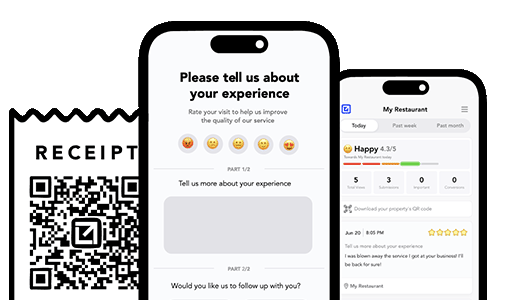Smart Ways to Get More Reviews [Guide]
Practical, proven ways for any business to get more authentic reviews.

TLDR: Your Google reviews might look fantastic, but if your Yelp profile is weak, you’re losing a big chunk of potential customers, especially iPhone users who search through Apple Maps. Google dominates desktop and Android searches, while Yelp powers Apple Maps, Siri, and countless third-party apps. This means your reputation is split across platforms, and both need attention. In this article, we’ll break down why a single negative review hurts so much, why low review volume kills trust, and how to build a smart review strategy that protects your reputation on both Google and Yelp.
Google reviews dominate web and Android searches. If someone types “best dentist near me” on Chrome or an Android device, Google reviews shape the first impression. But here’s the catch: iPhone users searching via Apple Maps or Siri never see your Google reviews, they see Yelp ratings instead. Yelp is also baked into thousands of third-party integrations, from food delivery apps to reservation systems. If your Yelp page is neglected, every Apple user who searches for your business could see a score that doesn’t reflect your actual quality. This isn’t rare, many businesses with 200 Google reviews and a 4.8 rating have only 5 Yelp reviews averaging 3.0. To a new customer, that looks suspicious, or worse, untrustworthy.
A single 1-star review can cause a 30% drop in conversions. Why? Because customers don’t just look at your overall rating, they read the worst review first. And thanks to negativity bias, people give more weight to bad experiences than good ones. If your Yelp score is sitting at 3.5 because of a few old complaints, iPhone users will skip you in seconds, even if your Google profile is stellar. The cost? Lost bookings, fewer walk-ins, and reduced referrals. For gyms, salons, and restaurants, this can mean thousands in lost revenue annually. One unhappy diner who vents on Yelp can keep dozens of new customers away, especially when that review ranks at the top of your page.
Even if you only have positive reviews, having too few signals risk. Customers think: “Is this business new? Are these reviews from friends and family?” A sparse profile can be as damaging as a negative one because it creates doubt. For Google and Yelp, review volume also impacts visibility. Businesses with 10 reviews often rank lower than competitors with 50, even if their star rating is slightly lower. This means quantity matters for SEO, while diversity and authenticity matter for trust. If you’re not building a steady pipeline of real reviews, you’re losing visibility and conversions every single day.
The solution isn’t blasting “Leave us a review!” everywhere. In fact, Yelp penalizes businesses that directly solicit reviews or offer incentives. The key is creating frictionless, low-pressure ways for happy customers to share their experience while catching unhappy customers privately before they vent online. That means:
VisibleFeedback helps businesses build this system automatically. Here’s how:
Your next customer is checking Google, and Yelp. Are you ready? Use VisibleFeedback to protect your reputation, grow review volume, and win on every platform.

Bad reviews can scare away potential customers. Intercept feedback in real time with VisibleFeedback.

Austin Spaeth is the founder of VisibleFeedback, a simple tool that helps brick-and-mortar businesses intercept negative reviews before they go public. With a background in software development and a passion for improving customer experience, Austin built VisibleFeedback to give business owners a frictionless way to collect private feedback and turn unhappy visitors into loyal advocates. When he’s not working on new features or writing about reputation strategy, he’s probably wrangling one of his six kids or sneaking in a beach day.
Whether you have no reviews, bad ones, or great ones, we’ll help you turn your feedback into growth.
No credit card required.
⛨ Trusted by over 137 local businesses like yours